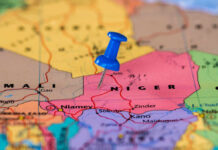
Cases of Leprosy have surfaced in central Florida, sparking concerns about the disease’s potential permanence in the region.
A recent analysis published in the Centers for Disease Control and Prevention’s (CDC) Emerging Infectious Diseases (EID) journal highlights the need for further investigation and monitoring to understand the extent and implications of the outbreak.
According to the journal’s authors, Florida has experienced a notable rise in leprosy cases without conventional risk factors. These trends indicate a growing body of evidence suggesting that leprosy has established itself as an ongoing presence in the southeastern United States.
The authors recommend including travel to Florida in the considerations for leprosy contact tracing in all states.
While leprosy cases are infrequent in the United States, with only 159 reported in 2020, the EID study revealed that central Florida bore the brunt of these cases. An astounding 81% of the state’s reported cases originated in this region, and approximately 34% of new patients between 2015 and 2020 seemed to have acquired the disease locally.
The EID released a report, saying, “Leprosy has been historically uncommon in the United States; incidence peaked around 1983, and a drastic reduction in the annual number of documented cases occurred from the 1980s through 2000. However, since then, reports demonstrate a gradual increase in the incidence of leprosy in the United States.”
Linda Adams, chief of the National Hansen’s Disease Program (NHDP) Laboratory Research Branch, said in a statement, “Leprosy is here in the United States. It’s very low incidence and a very low endemic country, but it is here.”
Researchers say leprosy may now be endemic in Florida https://t.co/bE0R12a1nn
— Florida’s Voice (@FLVoiceNews) August 3, 2023
In Orlando, a 54-year-old landscaper sought help at a dermatology clinic due to a painful rash that had stumped several previous doctors. Dr. Rajiv Nathoo’s biopsies provided a conclusive diagnosis of leprosy, which he described as something you usually encounter in textbooks.
Nathoo stated, “It’s really rare still. These numbers are still relatively super low here. We’re not that concerned with it.”
The disease’s slow-spreading nature, combined with its extreme rarity in the U.S., has made it challenging to contain its spread effectively.
Biopsies remain the only way to diagnose leprosy, but the CDC report highlights that physicians can play a crucial role in identifying and curbing the spread of the disease. Reporting cases and supporting efforts to identify transmission routes are essential steps in managing the disease’s impact.



























